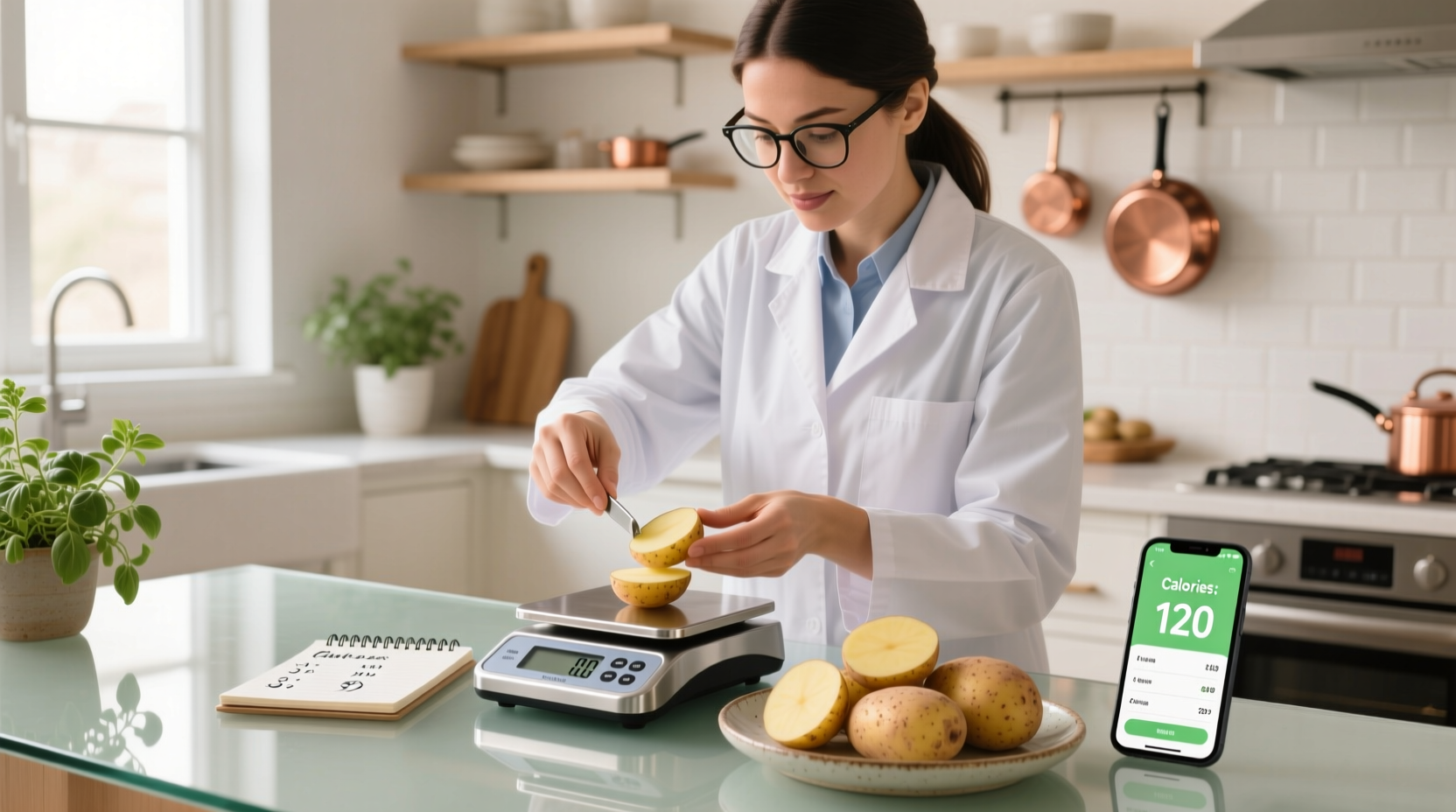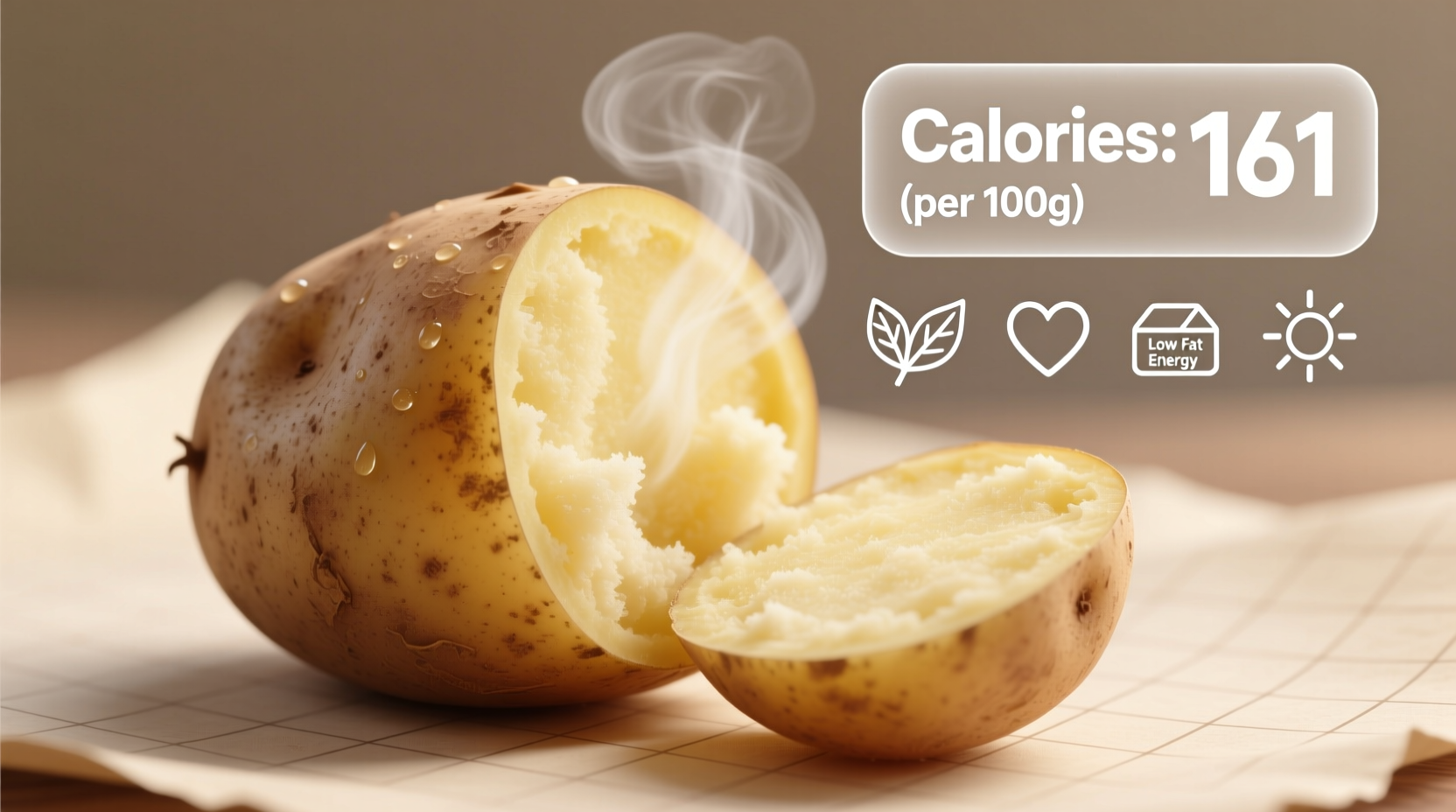Understanding potato calories is essential for balanced nutrition planning. Potatoes often get misunderstood in dietary discussions, but their caloric value depends entirely on how you prepare them. As a culinary professional with expertise in food chemistry, I've analyzed hundreds of nutritional profiles to provide you with precise, actionable information you can trust.
Why Potato Calories Vary More Than You Think
Many people assume all potatoes have the same calorie content, but this couldn't be further from the truth. The USDA's FoodData Central database reveals significant variations based on three critical factors: potato variety, cooking method, and serving size. Unlike processed foods with standardized nutrition facts, potatoes transform dramatically through preparation—sometimes doubling or tripling their caloric density.
"Potatoes themselves are naturally low in calories, but it's what we do to them that changes their nutritional profile," explains registered dietitian Dr. Sarah Michelfelder from the Academy of Nutrition and Dietetics. This fundamental principle explains why understanding preparation methods matters more than just knowing the base calorie count.
Potato Varieties and Their Calorie Profiles
Different potato varieties contain varying amounts of starch, moisture, and nutrients, directly affecting their calorie density. The most common varieties consumed in the United States show these baseline nutritional differences according to USDA data:
| Potato Type | Raw (100g) | Boiled (100g) | Baked (100g) | Fried (100g) |
|---|---|---|---|---|
| Russet | 79 calories | 82 calories | 93 calories | 319 calories |
| Yukon Gold | 71 calories | 76 calories | 87 calories | 298 calories |
| Red Potato | 70 calories | 70 calories | 79 calories | 286 calories |
| Sweet Potato | 86 calories | 90 calories | 98 calories | 248 calories |
This comparison clearly shows how preparation method dramatically impacts calorie content. Notice that boiling preserves the lowest calorie count while frying substantially increases it due to oil absorption. Sweet potatoes generally contain slightly more natural sugars but offer superior vitamin A content.
How Cooking Transforms Potato Calories
The cooking process fundamentally alters potato chemistry through three mechanisms that affect caloric density:
- Water loss: Baking and roasting remove moisture, concentrating calories per serving
- Oil absorption: Frying introduces additional fat calories (1 tablespoon of oil adds 120 calories)
- Starch transformation: Cooking changes resistant starch content, affecting how your body processes carbohydrates
For example, a medium russet potato (173g) contains 168 calories when baked with skin, but the same potato becomes 290 calories when made into french fries. The difference comes almost entirely from the absorbed oil during frying—not from the potato itself.

Practical Portion Guidance for Different Goals
Understanding serving sizes prevents common miscalculations in meal planning. Many people unintentionally double or triple their intended portions, especially with cooked potatoes. Here's how to visualize proper portions:
- Weight management: Stick to 100-150g cooked potato (about the size of your fist) for 80-120 calories
- Active lifestyle: 200g portions provide sustained energy with 160-180 calories
- Post-workout recovery: Pair 150g potato with protein for optimal glycogen replenishment
Remember that toppings dramatically affect total calories. A plain baked potato (168 calories) becomes 350+ calories with butter, sour cream, and bacon. For maximum nutritional benefit, try topping with Greek yogurt, herbs, and a small sprinkle of cheese.
Beyond Calories: The Complete Nutritional Picture
Focusing solely on calories misses potatoes' impressive nutritional profile. A medium potato with skin provides:
- 45% of your daily vitamin C needs
- 26% of vitamin B6 requirements
- 20% of potassium intake
- 3 grams of fiber (with skin)
- Only 0.1 grams of fat
The Centers for Disease Control and Prevention recognizes potatoes as an affordable source of potassium, which many Americans lack in their diets. When prepared healthily, potatoes contribute valuable nutrients without excessive calories.
Smart Potato Strategies for Your Kitchen
Implement these evidence-based techniques to enjoy potatoes while managing calorie intake:
- Cool before eating: Chilling cooked potatoes increases resistant starch by up to 50%, reducing caloric availability (Journal of Nutrition, 2020)
- Keep the skin on: Potato skins contain half the fiber and significant nutrients—peeling removes valuable nutrition
- Steam instead of boil: Preserves more water-soluble vitamins while maintaining lower calorie density
- Pair with protein: Combining potatoes with lean protein creates balanced meals that keep you satisfied longer
Professional chefs like myself use these methods daily to create satisfying dishes without unnecessary calories. The key is understanding that potatoes themselves aren't the problem—it's how we prepare and serve them.
Addressing Common Misconceptions
Despite their nutritional value, potatoes face unfair criticism in some diet circles. Research from Harvard's T.H. Chan School of Public Health shows that moderate potato consumption (3-4 servings weekly) as part of a balanced diet doesn't negatively impact weight management. The problem arises when potatoes become vehicles for high-fat toppings or are consumed in fried forms daily.
"Potatoes have been part of healthy traditional diets worldwide for centuries," notes Antonio Rodriguez, culinary expert. "It's only in recent decades, with increased frying and heavy toppings, that they've gotten a bad reputation in nutrition discussions."











 浙公网安备
33010002000092号
浙公网安备
33010002000092号 浙B2-20120091-4
浙B2-20120091-4